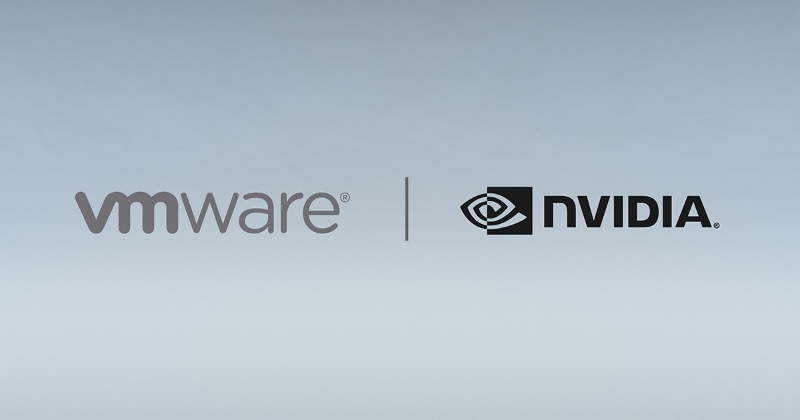Introduction
The race to leverage Artificial Intelligence (AI) and Machine Learning (ML) is defining the future of business. From training massive large language models (LLMs) that power next-generation chatbots to running complex simulations, the engine behind this revolution is undeniably the Graphics Processing Unit (GPU). The parallel processing power of GPUs makes them indispensable for the heavy computational lifting required by these advanced workloads.
However, as AI ambitions grow, so does the complexity of the underlying infrastructure. Many enterprises rely on robust, virtualized environments like VMware to manage their IT resources, benefiting from scalability, security, and centralized management. But integrating high-performance GPU computing into these virtualized setups often reveals significant challenges. Companies frequently face cost inefficiencies, with expensive GPU resources sitting idle or underutilized. They also encounter deployment bottlenecks, where provisioning and managing multi-GPU clusters for AI projects becomes a slow and complex process, hindering innovation and time-to-market.
This is where a specialized approach to GPU resource management becomes critical. In this article, we will explore how to overcome these hurdles and unlock the full potential of GPU compute within VMware. We will introduce WhaleFlux, a smart GPU resource management tool designed specifically for AI enterprises. WhaleFlux optimizes multi-GPU cluster efficiency, helping businesses significantly reduce cloud computing costs while dramatically accelerating the deployment speed and stability of their large language models and other AI initiatives.
Understanding GPU Compute in VMware Environments
At its core, GPU compute in a VMware environment is about making the raw power of physical GPUs available to virtual machines (VMs). This is achieved through technologies like NVIDIA vGPU (virtual GPU) or GPU passthrough. vGPU allows a single physical GPU to be partitioned and shared among multiple VMs, while passthrough dedicates an entire physical GPU to a single VM for maximum performance. This virtualization layer provides the flexibility and isolation that IT teams are familiar with from their VMware setups.
Despite this technological capability, managing GPU resources effectively is far from simple. The very nature of AI workloads—often “bursty” with periods of intense computation followed by lulls—clashes with the static way GPUs are typically allocated. An AI research team might need 8 GPUs for a two-week training sprint, but for the rest of the month, those powerful and costly processors might be barely used, yet still paid for. This leads to the most common pain points:
- Underutilization of GPU Resources: GPUs are capital-intensive assets. When they are not consistently running near their capacity, the return on investment plummets. It’s like owning a fleet of sports cars but only using them for grocery runs.
- Scalability Issues: Manually scaling GPU resources up or down in a VMware cluster is a time-consuming task. By the time an IT team procures, installs, and configures new GPUs to meet a project’s demand, the opportunity window for the AI team may have already closed.
- High Operational Costs: This underutilization and manual management directly translates to wasted spending. Whether you own the hardware (high CapEx) or use cloud instances (high OpEx), inefficient GPU use makes AI projects prohibitively expensive.
For these demanding AI tasks, the industry standard is unequivocally NVIDIA. From the data-center power of the H100 and H200 and the pervasive A100 to the accessible performance of the RTX 4090, these GPUs provide the foundational architecture for modern AI. The challenge, therefore, is not the hardware’s capability, but our ability to manage it intelligently within the virtualized environments we depend on.
Key Challenges in VMware GPU Compute
Let’s dive deeper into the specific issues that can derail AI projects in a VMware-based GPU setup.
Inefficient Resource Allocation
Static allocation of GPUs to VMs or users leads to massive waste. A developer might reserve four A100s “just in case” they are needed, tying up resources that another team desperately needs for a live project. There is often no intelligent system to dynamically reassign these resources based on real-time priority and need, creating artificial scarcity and gridlock.
Lack of Dynamic Scaling
AI workloads are not constant. The initial data processing, model training, and inference phases all have different resource requirements. A static GPU cluster cannot elastically scale to meet these fluctuating demands. You are forced to provision for peak demand, leading to over-provisioning and high costs, or for average demand, leading to under-performance and failed jobs during critical phases.
Increased Latency and Instability
Inefficient scheduling and resource contention can introduce latency in model training and inference. When multiple jobs are competing for GPU time without a smart scheduler, tasks can be delayed or interrupted. For deploying large language models in production, this instability is a deal-breaker, leading to poor user experiences and unreliable services.
The collective impact of these challenges is stark: AI projects cost more than they should and take longer to deploy. This slow time-to-market can be the difference between leading an industry and struggling to catch up. The promise of AI is agility and insight, but without solving these fundamental infrastructure problems, that promise remains out of reach. This is precisely the gap that WhaleFlux is designed to bridge, turning your VMware GPU cluster from a cost center into a strategic advantage.
Introducing WhaleFlux: A Smart Solution for GPU Management
So, how do we solve these complex challenges? The answer lies in intelligent, automated orchestration designed specifically for GPU workloads. WhaleFlux is a dedicated smart GPU resource management tool built for AI-driven businesses that want to master their VMware environment.
WhaleFlux acts as an intelligent layer over your GPU infrastructure, bringing a new level of efficiency and control. It is not just a monitoring tool; it is an active management platform that ensures your valuable NVIDIA GPUs are working as hard as you are.
Here’s how WhaleFlux delivers on its promise:
Intelligent Resource Scheduling
WhaleFlux uses advanced algorithms to dynamically allocate GPU resources based on job priority, resource requirements, and pre-defined policies. It automatically matches the right GPU power to the right job at the right time, eliminating manual intervention and the “resource hoarding” mentality.
Significant Cost Reduction
By dramatically increasing the utilization rate of your existing GPU fleet—whether on-premises or in the cloud—WhaleFlux ensures you get the most value from every dollar spent. It prevents over-provisioning and eliminates the need to purchase new hardware prematurely. You can do more with what you already have.
Enhanced Speed and Stability for LLMs
For teams deploying large language models, WhaleFlux provides a stable, high-performance platform. It ensures that inference workloads get the consistent GPU resources they need, avoiding latency spikes and ensuring a smooth experience for end-users. It also streamlines the training process by efficiently orchestrating multi-GPU, distributed training jobs.
To power these capabilities, WhaleFlux provides access to a range of industry-leading NVIDIA GPUs, ensuring you have the right tool for every task. Our offerings include:
- NVIDIA H100 and H200: For the most demanding large-scale model training and inference.
- NVIDIA A100: A versatile workhorse for a wide range of AI training and HPC workloads.
- NVIDIA RTX 4090: An excellent solution for development, testing, and mid-range inference tasks.
We provide flexible access to this hardware through both purchase and rental options, giving you the financial and operational flexibility your business requires. Please note that to ensure stability and avoid the overhead of ultra-short-term provisioning, we do not offer hourly rentals. Our minimum rental period is one month, which provides a perfect balance of flexibility and cost-effectiveness for sustained projects.
Benefits of Integrating WhaleFlux with VMware
Integrating WhaleFlux with your existing VMware environment transforms your GPU operations from a static cost center into a dynamic, value-generating asset. The benefits are tangible and immediate.
GPU compute performance is significantly enhanced.
WhaleFlux’s automation continuously monitors the health and load of every GPU in the cluster. It can automatically reroute jobs if a GPU fails or becomes a bottleneck, ensuring high availability and resilience. This means your AI training jobs finish faster and your inference endpoints are more reliable.
The cost savings are substantial.
Imagine a scenario where a financial services company uses WhaleFlux to manage a cluster of NVIDIA A100s. Previously, their GPU utilization hovered around 30%. After deploying WhaleFlux, intelligent scheduling and resource pooling pushed utilization to over 75%. This effectively more than doubled the output of their existing hardware investment, delaying the need for a costly hardware refresh by over a year and saving them hundreds of thousands of dollars.
Deployment times are slashed.
What used to take a data science team days or weeks to get the necessary GPU resources approved and provisioned can now be achieved in minutes through WhaleFlux’s self-service portal and automated policy engine. This agility allows AI teams to experiment more, iterate faster, and deploy models into production with unprecedented speed.
In real-world terms, this means a media company can deploy a new content-generation LLM in weeks instead of months. An autonomous vehicle research team can run more simulation cycles per day, accelerating their development timeline. WhaleFlux empowers enterprises to scale their GPU resources efficiently, not just physically, but intelligently.
Best Practices for Implementing WhaleFlux in Your Setup
To get the most out of WhaleFlux in your VMware environment, a thoughtful implementation is key. Here are some practical tips to ensure a smooth and successful deployment:
Start with a Thorough Assessment
Before deployment, conduct a detailed audit of your current and projected AI workloads. Understand the performance requirements for different tasks—do you need the tensor core performance of the H100 for training, or is the A100 or RTX 4090 sufficient for development and inference? This will inform which GPUs from the WhaleFlux portfolio you should prioritize.
Define Clear Resource Policies
Work with your AI and development teams to establish clear priorities and quotas within WhaleFlux. For example, production inference jobs might have the highest priority, followed by model training, and then experimental development work. These policies allow WhaleFlux to make intelligent scheduling decisions automatically.
Promote a Self-Service Culture
Train your developers and data scientists to use the WhaleFlux portal to request the resources they need. This reduces the burden on your IT team and empowers your technical staff to be more agile, breaking down the traditional bottlenecks associated with resource provisioning.
Monitor, Analyze, and Optimize
Use WhaleFlux’s built-in analytics and reporting tools to continuously monitor your cluster’s performance. Identify trends, spot new opportunities for optimization, and validate your cost savings. This data-driven approach ensures you are continuously maximizing your ROI and can make informed decisions about future GPU procurement or rentals.
By following these steps, you can leverage WhaleFlux not just as a tool, but as a strategic platform that ensures high availability, peak performance, and maximum return from your investment in NVIDIA GPU technology.
Conclusion
In the competitive landscape of AI, effective infrastructure management is not just an IT concern—it is a core business competency. Success hinges on the ability to deploy powerful models quickly, reliably, and cost-effectively. Managing GPU compute within VMware environments presents unique challenges, but as we have seen, they are not insurmountable.
The key is to move beyond manual, static management and embrace intelligent, automated orchestration. WhaleFlux stands out as a key enabler in this journey. By optimizing the utilization of your multi-GPU cluster, featuring the latest NVIDIA technology like the H100, H200, A100, and RTX 4090, WhaleFlux directly tackles the twin problems of high cost and slow deployment. It transforms your GPU infrastructure into a flexible, efficient, and powerful engine for AI innovation.
Are you ready to stop wrestling with your GPU resources and start harnessing their full potential? Don’t let infrastructure limitations slow down your AI ambitions.
Explore how WhaleFlux can transform your VMware GPU compute environment. Contact our team today for a personalized consultation and see how much you could save.

